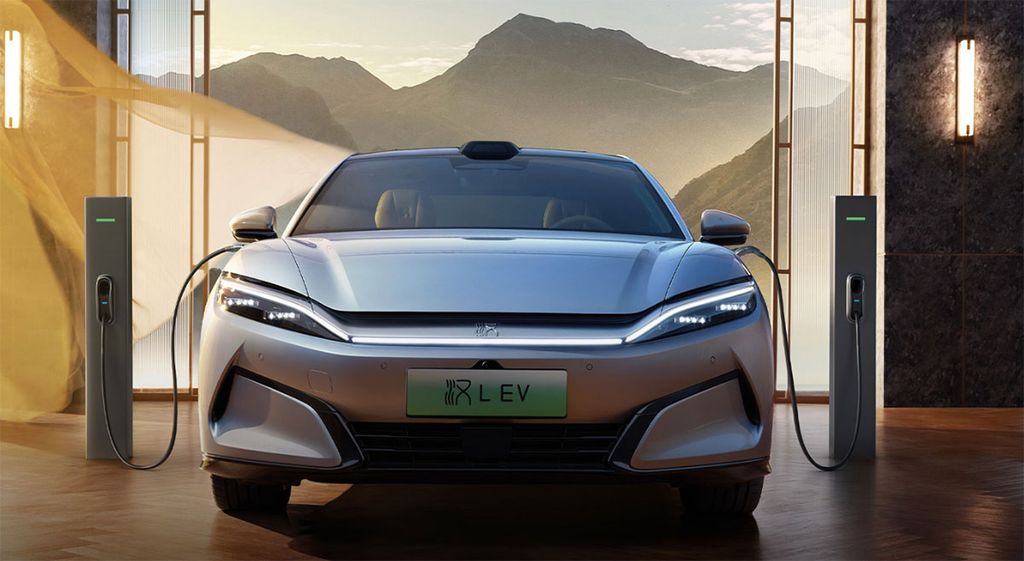- BYD is launching two EVs that boast “Megawatt” charging capability, capable adding about 250 miles of range in just 5 minutes.
- Both models are even cheaper than expected, with prices starting at the equivalent of $28,544.
- Since chargers can’t provide a megawatt of power, the Han L and Tang L both come with dual charging ports for simultaneous fast-charging.
Chinese giant BYD shocked the electric car industry when it announced Megawatt-class charging for upcoming EVs. While U.S. market EVs top out at around 350 to 400 kilowatt when charging, BYD said its new cars will be able to charge at over double that rate, drawing swift replies from other cutting-edge Chinese brands promising their own hyper-fast charging solutions. This new technology would cut charging times down to as little as 5 minutes for 248 miles of range, effectively making gas irrelevant in the long term. Now, BYD has announced how much it’ll cost, and the price is even lower than initially promised.
14
Source: BYD
The world’s largest EV maker says its Han L sedan will start at 209,800 yuan, equivalent to $28,544 at today’s exchange rates. That’s way lower than the originally announced starting price of 270,000 yuan ($36,737). While you can’t just convert the price to get a full picture—as tax differences, purchasing power parity differences and plenty of other caveats apply—the new price is still an extraordinary value. A Tesla Model 3 starts at 235,000 yuan, around $32,000, per Car News China. That means this world-shaking, cutting edge EV that’s redefining the “fast” in fast charging costs less than a Tesla that launched in 2017. You can see, then, why Western companies are getting their collective rumps kicked, especially in China itself.
The Han L will sedan comes in three trims, with the top one costing 279,800 yuan ($37,935). That makes the top-shelf version of this sleek, luxurious sedan about $12,000 cheaper than the average car in the U.S.
All versions come with a 83.2 kWh BYD “Blade” battery. Official range figures go from 373 miles (601 km) to 436 miles (701 km), though note that’s on China’s optimistic CLTC cycle. Real-world range will likely be worse, but with megawatt charging that’s not much of an issue. BYD recognizes that most chargers won’t be able to max out the “Super E” platform’s charging capabilities, too, so it includes two charging ports for simultaneous fast charging. You can hook up two 500-kW chargers and leave every Porsche, Lucid and Tesla in the dust. It also comes with 1,086 hp, so it’s not like they’ll be able to make up time on the road.

It’ll take two high-power chargers to max out the Han L. Megawatt stations will surely come, though.
Photo by: BYD
BYD God’s Eye, its equivalent to Tesla Autopilot, also comes standard. There will be a hybrid version, too, for those who somehow think this thing will slow them down on road trips. It’ll come with a 1.5-liter engine.
BYD is building an SUV on the same 1,000-volt Super E platform, the Tang L. It’s a medium-sized crossover with similar stats to the Han L. Pricing for that one starts at 229,800 yuan ($31,268) and stretches to 289,800 yuan ($39,432). That’s a hell of a deal for a luxury SUV that can suck up a small town’s worth of electricity during a bathroom break.

Photo by: BYD
The BYD Tang L crossover.
Clearly, quick-charging, affordable EVs are possible. China has proven that, but so have Hyundai and Tesla to a lesser extent. What we need is real investment in the technology, rather than half-hearted compliance cars from companies that would rather sell you a gas truck. If we don’t fix that problem soon, Western automakers will never catch up to Chinese competitors.
Contact the author: Mack.hogan@insideevs.com.
Read the full article here


